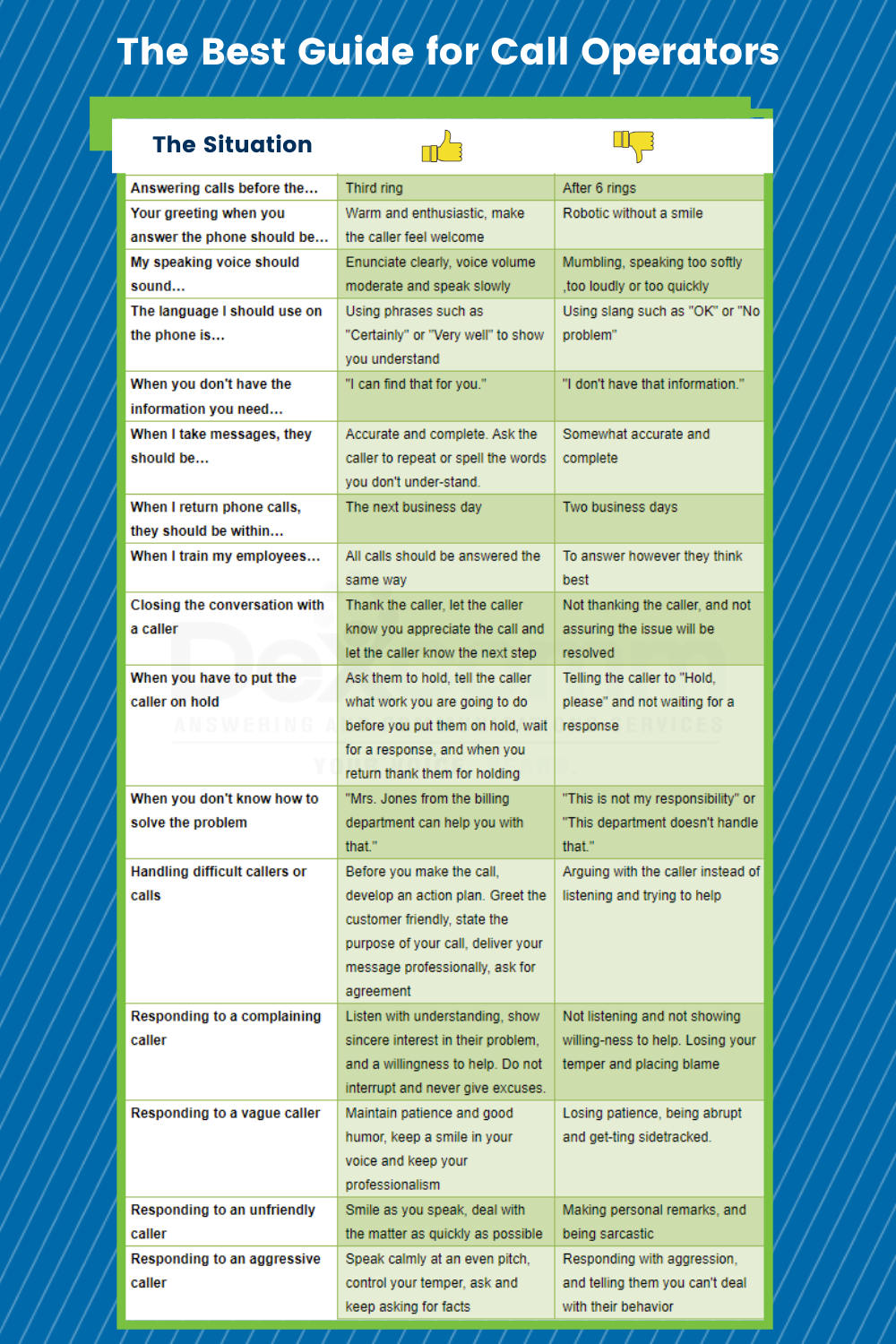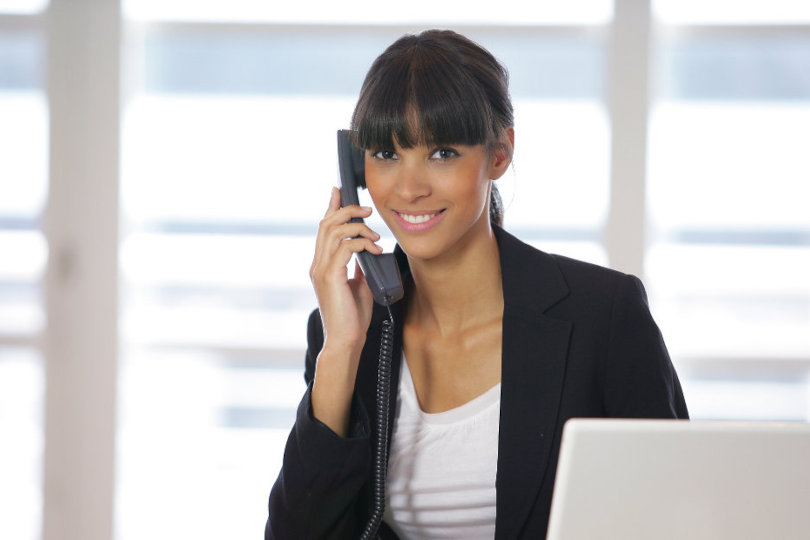All Categories
Featured
Table of Contents
- – What Is The Best What Is An Answering Service? ...
- – Best Telephone Answering Service Melbourne Cbd...
- – Best Temporary Or Short-term Call Answering Se...
- – Which Is Best Business Answering Services - V...
- – The Best What Are Call Answering Services? - ...
- – Best Virtual Receptionist (Live Phone Answer...
What Is The Best What Is An Answering Service? App?
This device and its followers were developed by Sava Jacobson, an electrical engineer with a private consulting company. While early voice mail used magnetic tape innovation, a lot of modern-day equipment uses solid state memory storage; some devices use a mix of both, with a solid-state circuit for the outbound message and a cassette for the inbound messages.
"toll conserving" listed below) (local phone answering service). This is useful if the owner is evaluating calls and does not wish to speak to all callers. In any case after going, the calling party ought to be notified about the call having actually been addressed (in the majority of cases this starts the charging), either by some remark of the operator, or by some greeting message of the little bit, or resolved to non-human callers (e.
This holds especially for the Little bits with digitally stored welcoming messages or for earlier machines (prior to the increase of microcassettes) with an unique limitless loop tape, separate from a 2nd cassette, dedicated to recording. There have been answer-only devices without any recording capabilities, where the welcoming message had to notify callers of a state of current unattainability, or e (virtual answering service).
Best Telephone Answering Service Melbourne Cbd Australia Deals Near Me

about availability hours. In tape-recording Little bits the welcoming generally consists of an invite to leave a message "after the beep". An answering device that utilizes a microcassette to tape-record messages On a dual-cassette answerphone, there is an outgoing cassette, which after the specified number of rings plays a pre-recorded message to the caller.

Single-cassette answering makers contain the outbound message at the beginning of the tape and inbound messages on the remaining space. They first play the statement, then fast-forward to the next readily available area for recording, then tape-record the caller's message. If there are many previous messages, fast-forwarding through them can trigger a substantial delay.
This beep is frequently described in the welcoming message, requesting that the caller leave a message "after the beep". Littles with digital storage for the recorded messages do not reveal this hold-up, of course. A little bit may offer a push-button control facility, where the answerphone owner can call the house number and, by entering a code on the remote telephone's keypad, can listen to tape-recorded messages, or erase them, even when far from home.
Best Temporary Or Short-term Call Answering Services

Consequently the device increases the variety of rings after which it answers the call (typically by 2, resulting in four rings), if no unread messages are presently kept, but responses after the set variety of rings (usually 2) if there are unread messages. This enables the owner to discover out whether there are messages waiting; if there are none, the owner can hang up the phone on the, e.
Some machines also permit themselves to be remotely activated, if they have been turned off, by calling and letting the phone ring a particular big number of times (normally 10-15). Some provider desert calls already after a smaller sized variety of rings, making remote activation difficult. In the early days of TADs an unique transmitter for DTMF tones (dual-tone multi-frequency signalling) was regionally needed for push-button control, because the previously used pulse dialling is not apt to convey appropriate signalling along an active connection, and the dual-tone multi-frequency signalling was implemented stepwise.
Any inbound call is not recognizable with regard to these residential or commercial properties in advance of going "off hook" by the terminal devices. So after going off hook the calls must be switched to appropriate gadgets and only the voice-type is instantly accessible to a human, however maybe, nevertheless must be routed to a LITTLE BIT (e.
Which Is Best Business Answering Services - Virtual Receptionists Brand
What if I told you that you do not need to really get your device when answering a consumer call? Somebody else will. So hassle-free, best? Answering phone calls doesn't need somebody to be on the other end of the line. Effective automated phone systems can do the technique just as efficiently as a live agent and often even much better.
An automated answering service or interactive voice reaction system is a phone system that communicates with callers without a live person on the line - virtual telephone answering service. When companies utilize this innovation, consumers can get the answer to a question about your company simply by utilizing interactions set up on a pre-programmed call circulation.
Although live operators update the customer support experience, numerous calls do not need human interaction. A simple documented message or directions on how a client can recover a piece of details normally fixes a caller's instant requirement - virtual call answering service. Automated answering services are an easy and effective method to direct incoming calls to the best person.
The Best What Are Call Answering Services? - Explained To Get
Notification that when you call a company, either for support or product questions, the very first thing you will hear is a pre-recorded voice greeting and a series of choices like press 1 for customer care, press 2 for inquiries, and so on. The pre-recorded options branch out to other choices depending on the customer's selection.
The phone tree system assists direct callers to the ideal individual or department utilizing the keypad on a smart phone. In some circumstances, callers can utilize their voices. It deserves keeping in mind that auto-attendant alternatives aren't limited to the ten numbers on a phone's keypad. As soon as the caller has actually picked their very first choice, you can design a multi-level auto-attendant that uses sub-menus to direct the caller to the right kind of support.
The caller does not have to interact with an individual if the auto-attendant phone system can handle their concern. The automatic service can route callers to a worker if they reach a "dead end" and require assistance from a live agent. It is pricey to hire an operator or executive assistant.
Best Virtual Receptionist (Live Phone Answering Service) Deals Near Me
Automated answering services, on the other hand, are considerably less costly and supply substantial expense savings at approximately $200-$420/month. Even if you do not have devoted staff to manage call routing and management, an automated answering service improves efficiency by permitting your group to focus on their strengths so they can more efficiently spend their time on the phone.
A sales lead routed to consumer service is a lost shot. If a customer who has item concerns reaches the wrong department or gets incomplete responses from well-meaning workers who are less trained to handle a specific type of question, it can be a reason for aggravation and discontentment. An automatic answering system can minimize the number of misrouted calls, consequently helping your staff members make much better use of their phone time while releasing up time in their calendar for other tasks.
With Automated Answering Systems, you can develop an individualized experience for both your staff and your callers. Make a recording of your primary welcoming, and just update it routinely to reflect what is going on in your company. You can produce as many departments or menu alternatives as you desire.
Table of Contents
- – What Is The Best What Is An Answering Service? ...
- – Best Telephone Answering Service Melbourne Cbd...
- – Best Temporary Or Short-term Call Answering Se...
- – Which Is Best Business Answering Services - V...
- – The Best What Are Call Answering Services? - ...
- – Best Virtual Receptionist (Live Phone Answer...
Latest Posts
Live Receptionist Service
Live Receptionist Service
Custom Phone Answering Near Me
More
Latest Posts
Live Receptionist Service
Live Receptionist Service
Custom Phone Answering Near Me